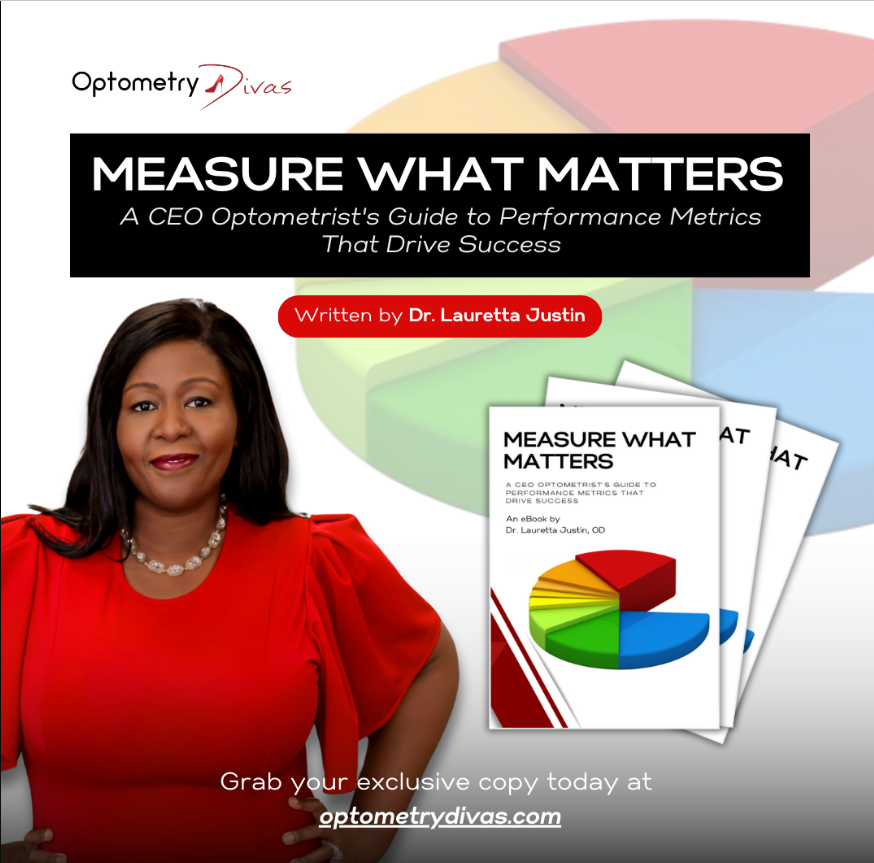Everything The CEO Optometrist Needs To Know About HR – Part 2 – How To Implement an Effective Human Resource System

Human resources (HR) is one of the more complex aspects of running a small business. The challenges of working with people don’t fit neatly into a spreadsheet, yet HR is incredibly important. Employee salaries and benefits make up a significant portion of your operating expenses, and your employees are one of your greatest assets. It’s essential to protect and manage that asset well.
In Part 1 of this blog series, I provided an overview of what HR is and why it’s crucial for your practice. Now, in Part 2, I’ll show you how to implement effective HR strategies in your practice and offer tools to help you create your own employee manual. Ready? Let’s dive in!
A Quick Recap – What Is Human Resource Management?
Human Resource Management (HRM) encompasses all aspects of managing employees, from recruitment to management, as well as other forms of guidance and support. HRM often handles:
- Hiring
- Performance management and reviews
- Employee development, motivation, and training
- Safety and wellness
- Benefits
- Communication between employees and management
HR plays a vital role in shaping the culture and environment of your practice. It sets the tone for how employees communicate, resolve conflicts, and collaborate. While some small businesses prefer to outsource HR functions, there is no way to avoid handling human resources entirely.
Human Resources: The Three Basics
HR is filled with legal obligations, which is why many practice owners tend to delay addressing it. For businesses with fewer than 50 employees, HR expert Jack Hayhow identifies three essential components to get started:
1. Employee Files
You must maintain three specific types of files for each employee:
- I-9 File: Used by the U.S. government to verify employee eligibility to work in the U.S. Keep all I-9s together in one file rather than under individual employee names.
- Employee General File: This is for your own benefit. It includes documentation you’ve gathered during the employee’s tenure, such as resumes, performance reviews, disciplinary actions, training records, evaluations, W-4 forms, and payroll details. This file will be frequently used.
- Employee Medical File: These files contain medical notes, disability information, and other medical data related to the employee. These records must be protected under HIPAA laws, which is why they are kept separate from general files. Store them in a secure, locked location.
2. Employee Handbook
An employee handbook is a must-have for two key reasons: it informs your employees of your expectations and protects your practice in case of disputes.
While the length and complexity of a handbook may vary, the Small Business Administration recommends covering these seven areas:
- Non-Disclosure Agreement (NDA): If your practice has trade secrets or confidential information, this is essential.
- Anti-Discrimination Policies: In the U.S., explain how your practice complies with the Americans With Disabilities Act and other anti-discrimination laws.
- Safety and Security: Outline policies for ensuring employee safety, such as compliance with OSHA, emergency procedures, and the use of technology like video surveillance and password protection.
- Compensation and Benefits: Clarify the benefits offered, both legally required and additional perks. Outline how employees can access these benefits and the steps for promotions or raises.
- Work Schedules, Vacation, and Leave: Define your policies on work hours, vacations, telecommuting, and absenteeism. Even with flexible scheduling, document your expectations.
- Standards of Conduct: Include dress code, behavior, computer use during work hours, and ethics. Be explicit about the consequences of breaking these standards.
- General Employment Information: Detail your policies on work ethic, promotions, termination, employee reviews, and record-keeping.
Make sure employees receive a copy of the handbook, sign an acknowledgment of understanding, and store that signed statement in their file. Ensure the handbook is easily accessible, whether in digital or paper format.
3. Display Required Posters
Depending on your location, you may be required by law to display specific posters where they are visible to employees. These may vary by state or country, so it’s wise to consult a local government agency or legal counsel. You can also purchase compliance poster packets to simplify this process.
Conclusion
Establishing your HR policies early sets the foundation for handling inevitable issues as your practice grows. Employee complaints, legal challenges, and communication all hinge on effective HR management.
There’s always more to learn about HR. For more advanced topics, check out articles on HR best practices, talent management, employee experience, and HR innovation.
I hope you found this article helpful and will return for Part 3 next week. In that post, I’ll cover the 5 Human Resources Mistakes You Need to Avoid—you won’t want to miss it!
If you’re thinking, “Lauretta, this all sounds great, but I need help putting my employee manual together,” I’ve got good news! In my CEO of YOU™ Consulting Program for Private Practices, I help practice owners like you create custom employee manuals. If you’re ready to take your practice to the next level, sign up today!
Until next time, remember to Dream Big, Take Risks, and Become the CEO of YOU™!






Responses